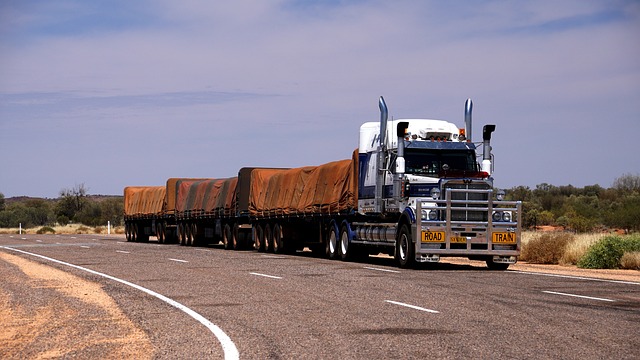The Pros and Cons of Truck Tolling: An Essential Overview
The issue of truck tolling is a contentious topic that affects various stakeholders, including the trucking industry, government agencies, road users, and even the general public. As the dynamics of transportation evolve, so do the discussions around tolling systems designed specifically for trucks. Truck tolling refers to the system of charging fees to commercial trucks for using certain roadways, typically to offset the wear and tear caused by heavy vehicles and to fund infrastructure development.
Understanding the pros and cons of truck tolling is crucial for informed decision-making. This article aims to provide a comprehensive overview, examining the advantages and disadvantages of implementing truck tolling systems.
Advantages of Truck Tolling
1. Infrastructure Funding
Tolling can be an effective means of funding the maintenance and expansion of transportation infrastructure. Heavy trucks contribute significantly to road wear, which necessitates constant repairs and upgrades. By imposing tolls, governments can ensure that those who cause the most damage contribute fairly to infrastructure upkeep.
2. Traffic Management
Implementing tolls can serve as a traffic management tool, helping to regulate the flow of heavy trucks on specific routes. Congestion on highways can be alleviated by encouraging truck drivers to choose alternative routes or off-peak travel times, ultimately promoting smoother traffic flow for all road users.
3. Environmental Benefits
Truck tolling can also contribute to environmental sustainability. By discouraging unnecessary trips and encouraging the use of alternative routes, tolling may lead to reduced emissions from heavy trucks. Furthermore, the funds generated through tolling can be allocated to improving public transit systems or cycling paths, promoting greener transport solutions.
4. Fairness and Equity
Truck tolling offers a more equitable approach to usage-based funding. Unlike fuel taxes, which apply universally, tolls can be adjusted based on the specific routes taken by trucks. This means that trucking companies pay according to their use of the infrastructure, aligning costs more closely with the actual wear and tear caused by their vehicles.
5. Improved Safety
Many toll funds can be earmarked for safety improvements on highways and roads. The revenue generated from truck tolls can be utilized to implement better signage, lighting, and safety measures on critical routes, contributing to overall road safety for both trucks and other vehicles.
Disadvantages of Truck Tolling
1. Increased Operating Costs
For trucking companies, tolls represent an additional cost that can significantly impact their overall operating expenses. Smaller companies, in particular, may struggle to absorb these costs. This could lead to higher shipping rates, which may ultimately be passed on to consumers.
2. Route Evaporation and Traffic Diversion
While tolling can help manage traffic congestion, it may also result in unintended consequences, such as traffic diversion to non-tolled routes. This “route evaporation” can place additional strain on local roads not designed for heavy truck traffic, leading to safety and wear issues in residential areas.
3. Administrative Costs
Establishing and enforcing a truck tolling system can be costly. The administrative overhead involved in collecting tolls, monitoring compliance, and handling exceptions can take significant resources away from other essential infrastructure projects.
4. Public Backlash
Truck tolling can face public opposition, particularly from local communities that feel they are unfairly affected by tolling policies. Concerns can arise over increased truck traffic on local roads, and communities may argue that tolls unfairly penalize businesses and logistics operations critical to their local economies.
5. Limited Flexibility
Once a toll system is set in motion, making adjustments can be complicated and politically sensitive. Changes to toll rates, routes, or payment systems can incite public backlash or lead to legal entanglements, limiting governmental flexibility in managing evolving transportation needs.
Considerations for Stakeholders
Government Agencies
For government agencies, truck tolling can provide a revenue stream essential for maintaining and upgrading infrastructure. However, they must balance this with public sentiment and the economic realities faced by the trucking industry. Engaging stakeholders through transparent communication and stakeholder forums can help build consensus around tolling approaches.
Trucking Companies
For trucking companies, understanding the implications of truck tolling is essential for effective route planning and cost management. Companies may need to invest in technology that assists in toll calculation and route optimization to mitigate the financial impact of tolling.
Local Communities
Local communities have a significant stake in the conversation surrounding truck tolling. While tolls may improve infrastructure financing and reduce road wear, communities must be consulted to address their concerns about increased traffic and potential safety issues.
Conclusion
The debate surrounding truck tolling is multifaceted, with compelling arguments on both sides. Proponents emphasize the benefits of sustainable infrastructure funding, traffic management, and safety improvements, while opponents raise valid concerns about increased costs, routing issues, and potential public backlash.
For policymakers and stakeholders, the key lies in navigating these complexities. An effective truck tolling policy must seek to balance funding requirements with the economic realities of the trucking industry and the views of affected communities. If approached thoughtfully, truck tolling can be a valuable tool for enhancing transportation infrastructure in a way that benefits all road users.
As we look ahead to the future of transportation, dialogue and collaboration among stakeholders will be crucial in shaping tolling policies that are efficient, fair, and sustainable.
